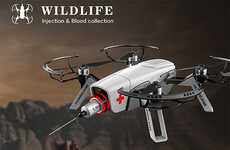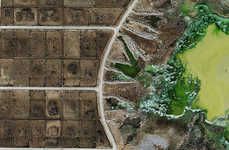
Animal Conservation Research Shows Where Our Help is Needed Most
Alyson Wyers — July 31, 2013 — Eco
References: www4.ncsu.edu & fastcoexist
By mapping the world's animals, animal conservation activists can be more strategic with their focus. These fine-grain pictures put together by Clinton Jenkins, a research scholar at North Carolina State University, depict levels of species variety around the globe. The photographs show the biodiversity of different mammals, amphibians and birds.
Jenkins hopes this knowledge will improve decision making on the ground, especially on a regional level. He says, "As conservation scientists, we really need to be aiming our science at the scales most useful for conservation actions."
His recent research looks at how well current conservation efforts correlate to these graphs. Clinton feels more should be done in the Andes to avoid animal extinction as there are smaller distributions of species there. He feels the Andes has more species at greater risk to extinction than the Amazon, where most conservationists are working.
Jenkins hopes this knowledge will improve decision making on the ground, especially on a regional level. He says, "As conservation scientists, we really need to be aiming our science at the scales most useful for conservation actions."
His recent research looks at how well current conservation efforts correlate to these graphs. Clinton feels more should be done in the Andes to avoid animal extinction as there are smaller distributions of species there. He feels the Andes has more species at greater risk to extinction than the Amazon, where most conservationists are working.
Trend Themes
1. Animal Mapping - Using fine-grain pictures to map and identify species variety globally for more strategic animal conservation efforts.
2. Regional Conservation Decision-making - Using knowledge of species biodiversity on a regional level to improve decision-making for effective conservation actions.
3. Correlation of Conservation Efforts - Examining the effectiveness of current conservation efforts by correlating them to species variety graphs.
Industry Implications
1. Animal Conservation - Leveraging animal mapping techniques to enhance conservation efforts and prioritize actions.
2. Environmental Research - Applying species variety data to inform environmental research and conservation strategies.
3. Biodiversity Assessment - Utilizing fine-grain pictures and maps to assess and monitor biodiversity in different ecosystems.
4.1
Score
Popularity
Activity
Freshness























